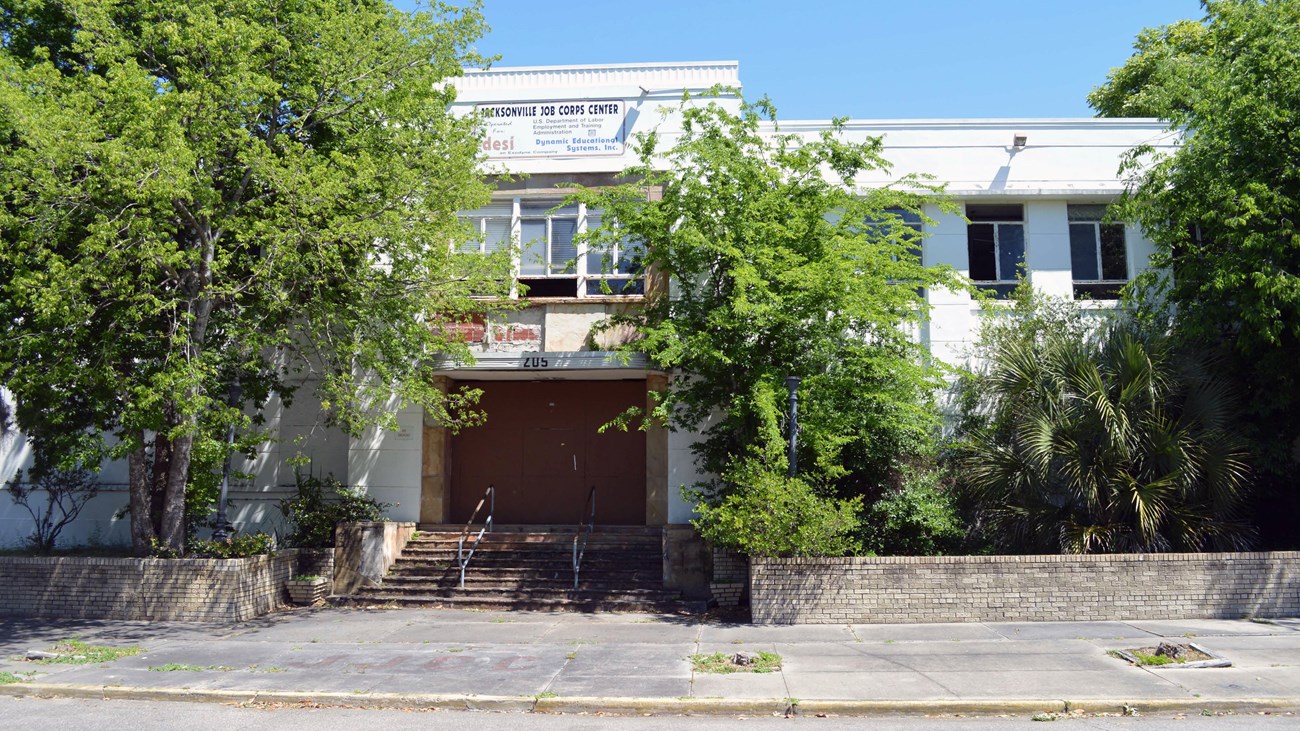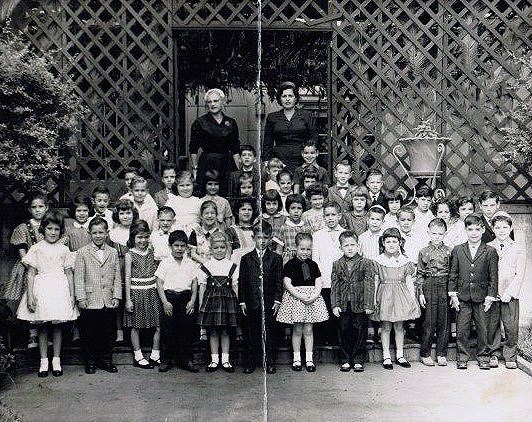Part of a series of articles titled National Register and National Historic Landmarks Celebrate Jewish Heritage Month.
Article
Jacksonville Jewish Center

Photograph by Paul Weaver, courtesy of Florida State Historic Preservation Office.
Jewish Community Centers (JCCs) developed in the United States during the early twentieth century and became the heart of local social, educational, and religious activities. Inspired by the vision of New York Rabbi Mordecai Kaplan and his model West Side Jewish Center in Manhattan, the Jacksonville Jewish Center embodies this movement and served the Jacksonville Jewish community from 1950 until 1970.

Jacksonville Jewish Center
A Small But Mighty Community
In the late 1800s there were only five orthodox Jewish families in Jacksonville, forming the small Hebrew Orthodox Congregation B’nai Israel in 1901. By 1927, with a growing membership and a need for larger facilities, the congregation built a new synagogue in Springfield.Congregation B’nai Israel then became known as the Jacksonville Jewish Center. The continued growth of the Jewish community in Jacksonville spurred the construction of more buildings. From 1946 to 1954, the local Jewish community grew from 3,000 to over 4,000 people. Rabbi Sanders Tofield, head of the Jacksonville Jewish Center from 1947-1960, directed the planning, fundraising, and construction of the facilities.
Many of the leaders of the community were young GIs who returned home from World War II and started families, fueling the local baby boom. In 1950, the congregation built the current community center. Finally, the classroom annex was added in 1957, completing the state-of-the-art educational facility. Between the main building and the annex, there were 19 classrooms for daily use, a chapel, library, social hall, school, playground, auditorium/gymnasium, banquet facility, bridal lounge, meeting rooms, and offices.
Nurturing Culture
This site was not just a place for education, but a place to gather as a community. The center was a home away from home where religion, art, music, literature, and other aspects of Jewish culture could be nurtured and shared. Moreover, the Jacksonville Jewish Center was a melting pot where a diverse group of Jews came together to form a new community. Unlike many northern cities, where synagogues often formed around the country or even village of origin, the Jacksonville community was a diverse mix of persons whose families arrived at different times from many parts of Europe, South America, and the Middle East. By 1954, members of the Jacksonville Jewish community came from 38 states and 27 countries.Supporting Community Activism
This tight-knit congregation supported issues of social justice, including the end to desegregation and racial discrimination in the South. In 1958, the Center was bombed along with a local Black school. As a result of the attack, the doors to the center were destroyed and a crater was left at the main entrance. In 1960, youths from the Springfield neighborhood painted swastikas on the Center. The local Jewish community remained supportive of civil rights activities and desegregation of public schools and accommodations throughout the 1960s.The Jewish Center also fostered programs for equal rights for women. With the opening of the new center in 1950, the Sunday School program for children could begin as early as age 6 and continue through to confirmation at age 16. The program broke from Orthodox tradition and included both boys and girls, with girls being able to have Bat Mitzvah ceremonies—the first congregation to offer a Bat Mitzvah program in Jacksonville.
Jacksonville Jewish Center
Education
Unlike many of the religious schools in Duval County, the Jewish Center focused on religious and cultural themes, and did not have a lay curriculum such as mathematics, science, or social studies. The Jewish Center was particularly important for providing youth education and recreational activities, including a daily nursery-kindergarten. During summer months, the Center housed Hebrew School and day camp programs. Activities included Hebrew studies, athletics, arts and crafts, and field trips.
The Jacksonville Jewish Center provided for a variety of activities. The synagogue (no longer extant) was used primarily for religious services, while the community center and the 1957 classroom annex served educational, social, and recreational purposes. While the focus was on education and recreation for youth, the buildings also served as a venue for health education, wedding receptions, plays, concerts, readings, organized debates, and all types of meetings. There was a gymnasium for basketball, volleyball, and other recreational activities. The building was described as “one of the busiest social centers in the city and the pride of the Jewish community of Jacksonville.”
Moreover, its programs extended beyond the Jewish community to non-Jewish residents of Springfield and the City of Jacksonville. Non-Jewish church groups and public school classes visited the center and received instruction on Jewish religious practice and culture. Interfaith meetings were held at the center between the Jewish congregation and local Protestant and Catholic church groups.
Adaptive Reuse
In 1976, the Jewish Center relocated within Jacksonville, largely due to the majority of its members moving to the Southside of Jacksonville. Subsequently, the United States Labor Department purchased the property. In 1979 it opened the Jacksonville Job Corps Center. The Job Corps operated at this site for 26 years before moving to a new location in 2005. Recently, a private developer purchased the campus to adapt into apartment buildings.Last updated: May 17, 2024
